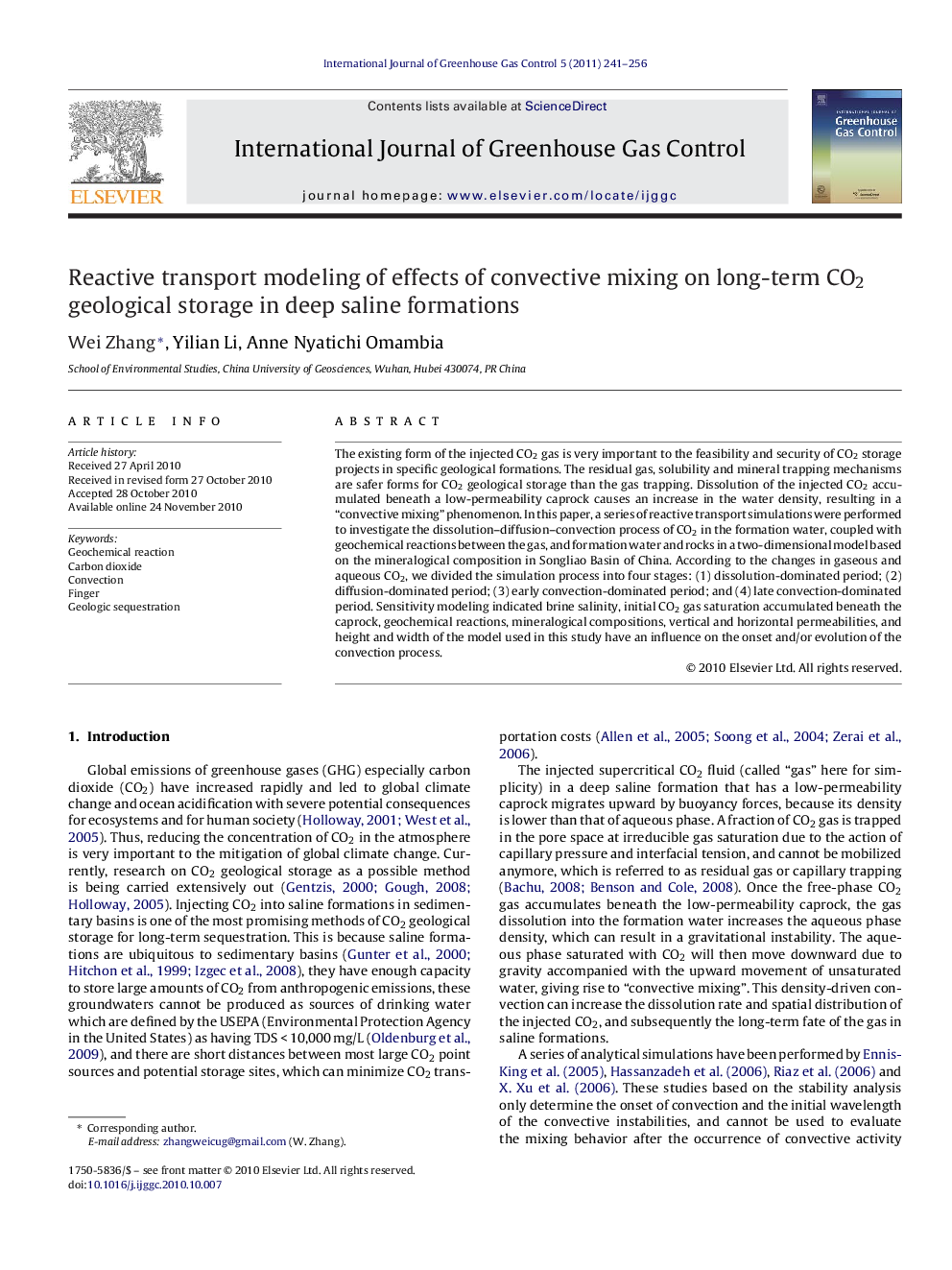| کد مقاله | کد نشریه | سال انتشار | مقاله انگلیسی | نسخه تمام متن |
|---|---|---|---|---|
| 1743501 | 1522022 | 2011 | 16 صفحه PDF | دانلود رایگان |

The existing form of the injected CO2 gas is very important to the feasibility and security of CO2 storage projects in specific geological formations. The residual gas, solubility and mineral trapping mechanisms are safer forms for CO2 geological storage than the gas trapping. Dissolution of the injected CO2 accumulated beneath a low-permeability caprock causes an increase in the water density, resulting in a “convective mixing” phenomenon. In this paper, a series of reactive transport simulations were performed to investigate the dissolution–diffusion–convection process of CO2 in the formation water, coupled with geochemical reactions between the gas, and formation water and rocks in a two-dimensional model based on the mineralogical composition in Songliao Basin of China. According to the changes in gaseous and aqueous CO2, we divided the simulation process into four stages: (1) dissolution-dominated period; (2) diffusion-dominated period; (3) early convection-dominated period; and (4) late convection-dominated period. Sensitivity modeling indicated brine salinity, initial CO2 gas saturation accumulated beneath the caprock, geochemical reactions, mineralogical compositions, vertical and horizontal permeabilities, and height and width of the model used in this study have an influence on the onset and/or evolution of the convection process.
Journal: International Journal of Greenhouse Gas Control - Volume 5, Issue 2, March 2011, Pages 241–256